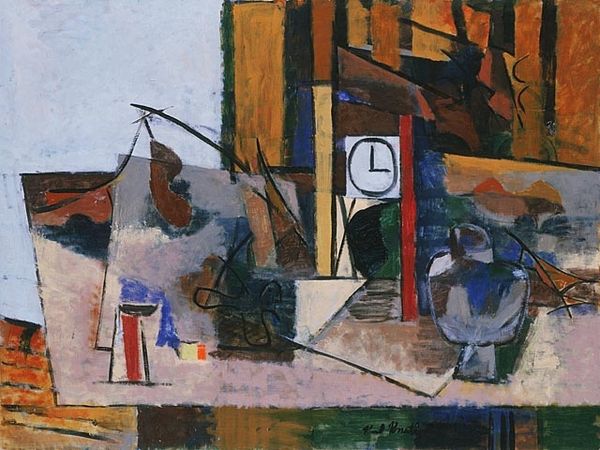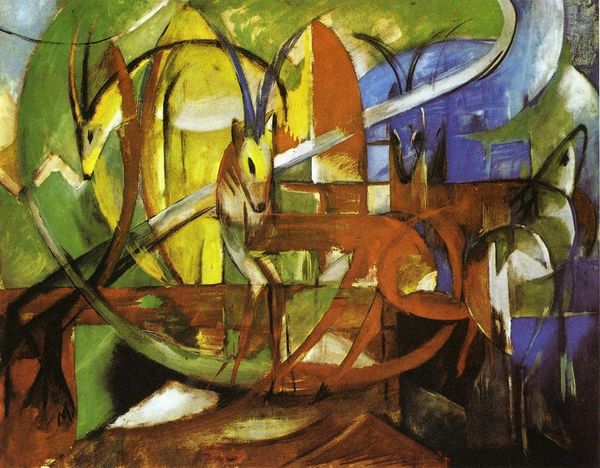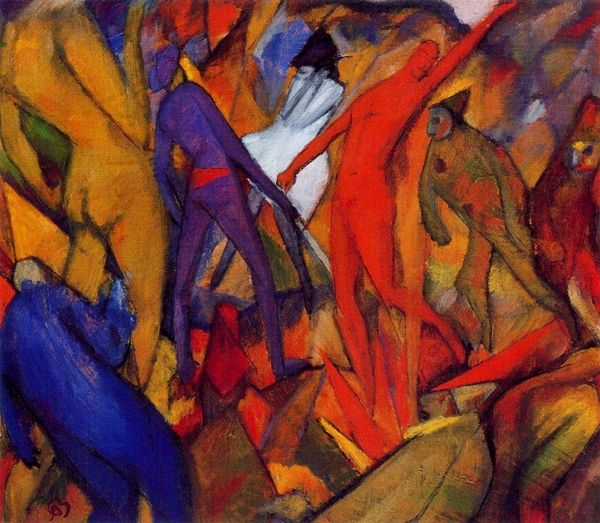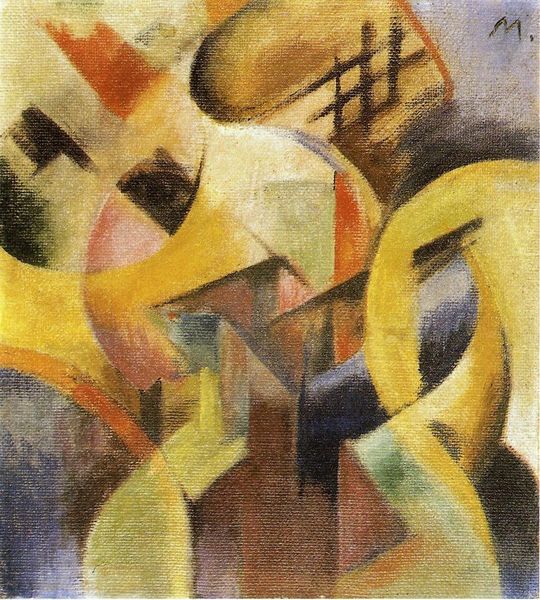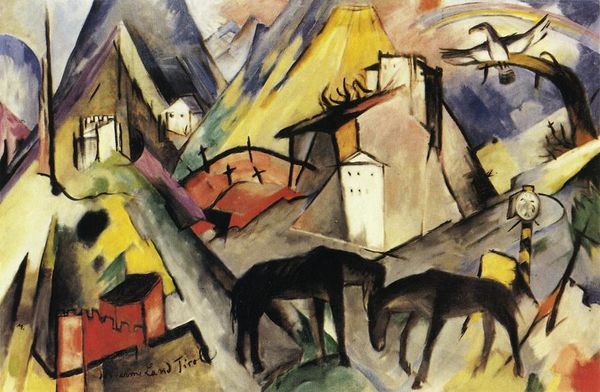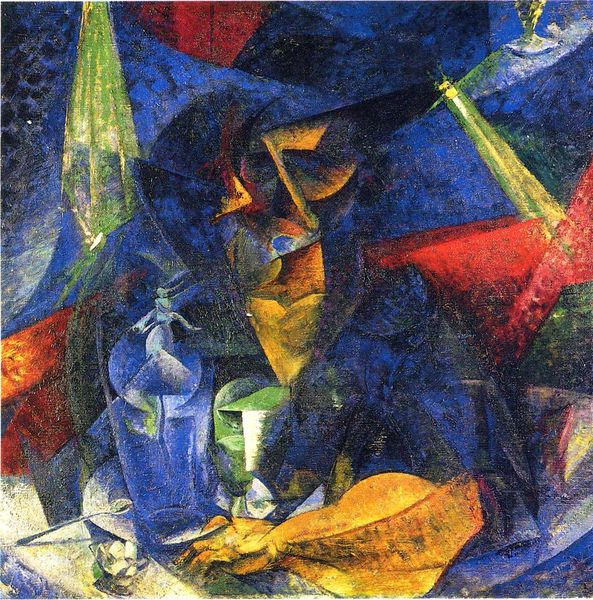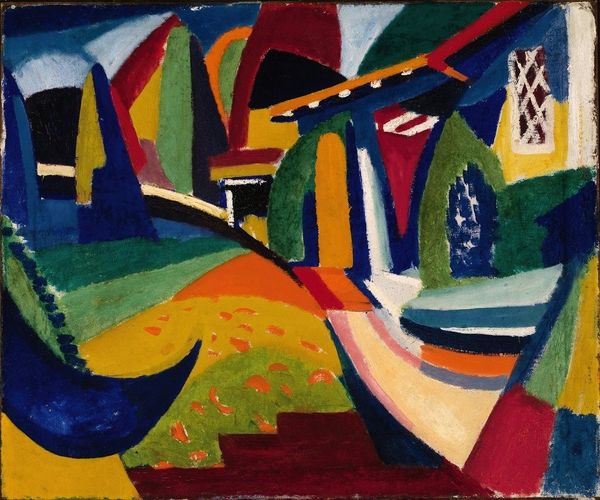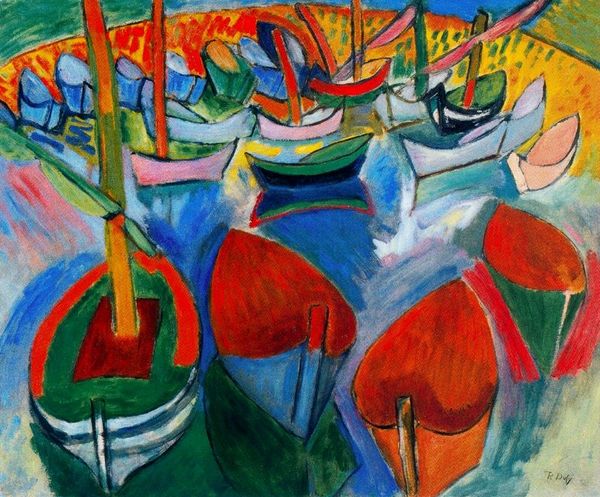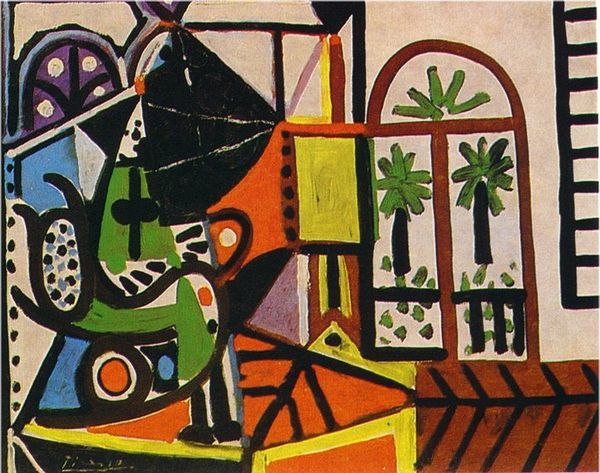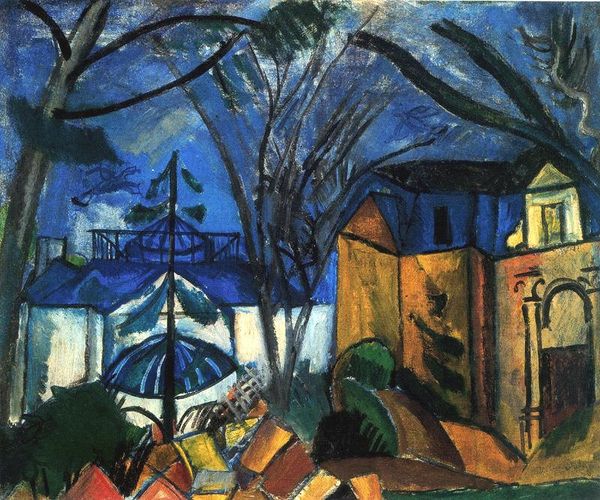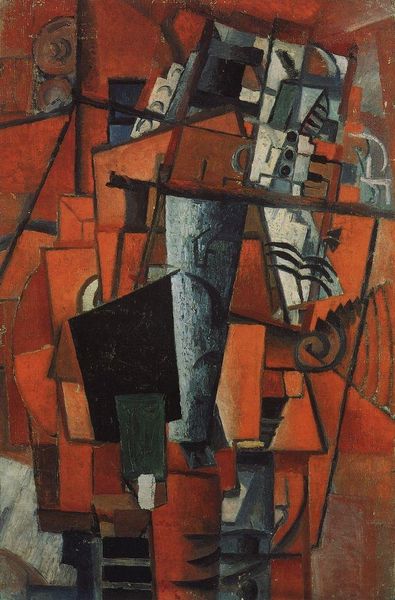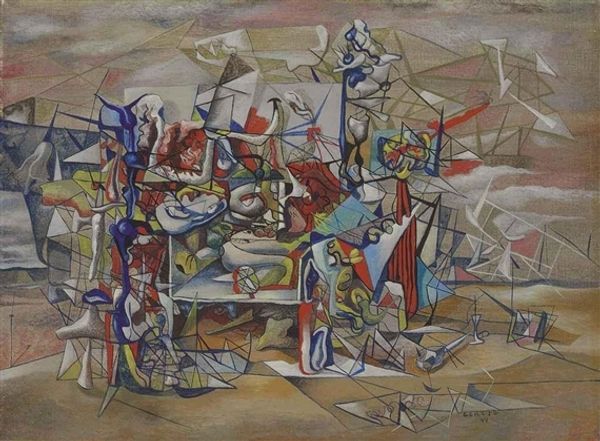
Copyright: Public domain US
Editor: Raoul Dufy's "Boats in Marseille," created in 1908 using oil paint, presents an interesting take on the harbor. It almost feels like a child's drawing, with such simplified shapes and bold colors, and I am so curious, what's your take on a piece like this? Curator: What I find fascinating is how Dufy situates himself within the broader cultural conversation about representation at the time. This was a period grappling with industrialization and changing social structures, leading artists to question traditional academic styles. Dufy's move towards simplification reflects a societal shift. What aspects of Marseilles do you think he's trying to capture by simplifying its portrayal? Editor: Perhaps he's trying to highlight the essence of the port city, focusing on the colorful energy rather than precise details, like a memory. How was this viewed by the public at the time? Curator: That's insightful! And you’re right, its initial reception was mixed. There was certainly pushback against this departure from realism, as the establishment preferred the accepted salon style, however it found some traction in smaller progressive gallery. Editor: That makes sense, considering the time. Knowing that contextual shift gives me a better appreciation for what Dufy was trying to accomplish, he wasn't simply painting boats; he was part of a larger change in how art related to life and culture. Curator: Exactly! The rejection and subsequent slow embrace demonstrates how art shapes and responds to societal transformation. Thinking about how different movements were emerging at this period shows the changing socio-political and artistic influences that framed pieces like this, what do you make of its cultural significance today? Editor: I think, with the distance of time, we see this as one of many steps in how people viewed and processed a rapidly evolving and changing world. It reminds us that art, while aesthetically pleasing or not, always takes part in history, always adds nuance to socio-political environments. Curator: Agreed. It shows us the evolution of art institutions, like salons and smaller galleries, in shaping acceptance and appreciation, teaching the influence they held over how art became public at the time. It also emphasizes art’s engagement with, and reflection of society itself.
Comments
No comments
Be the first to comment and join the conversation on the ultimate creative platform.
